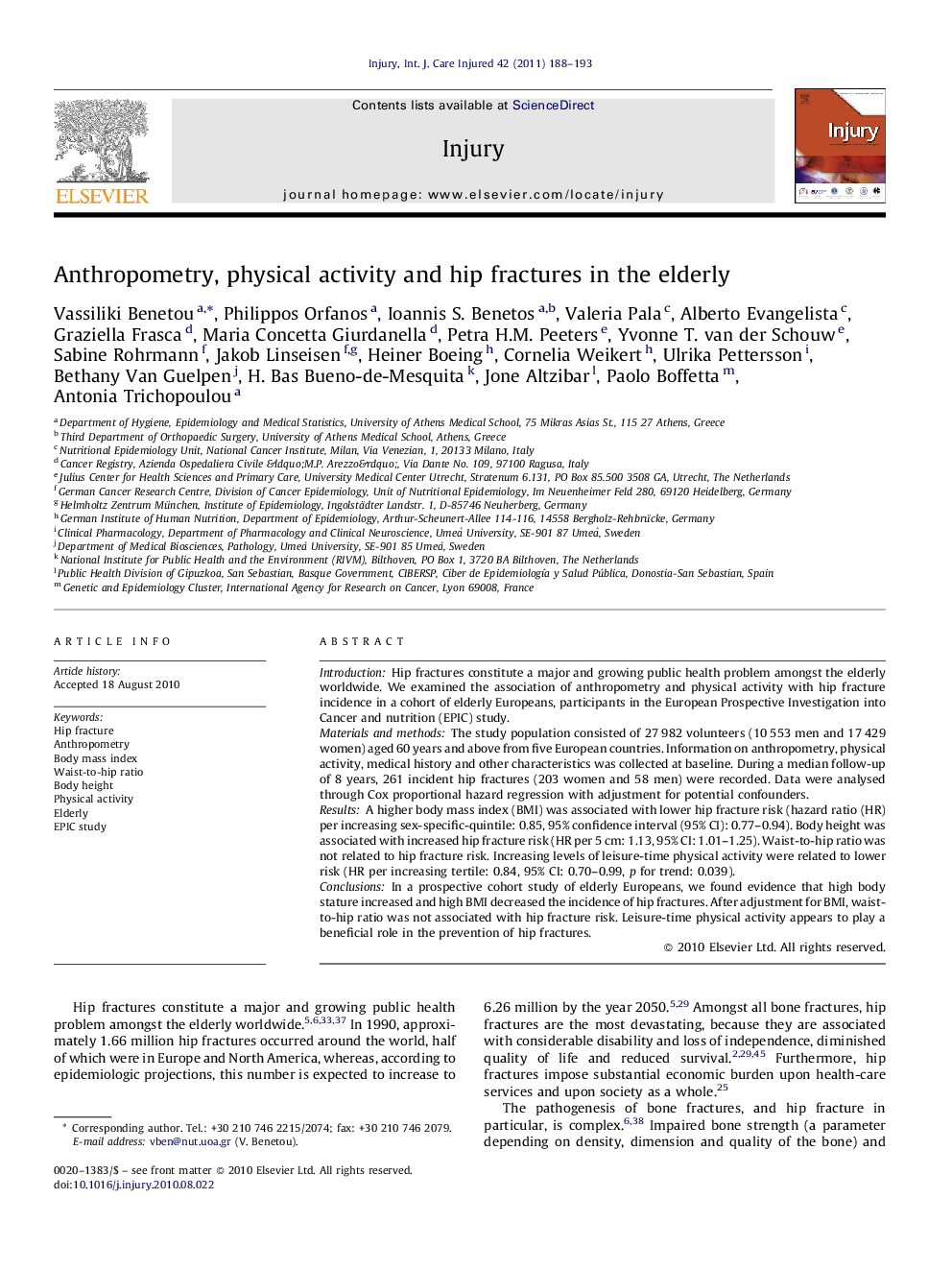| Article ID | Journal | Published Year | Pages | File Type |
|---|---|---|---|---|
| 3241203 | Injury | 2011 | 6 Pages |
IntroductionHip fractures constitute a major and growing public health problem amongst the elderly worldwide. We examined the association of anthropometry and physical activity with hip fracture incidence in a cohort of elderly Europeans, participants in the European Prospective Investigation into Cancer and nutrition (EPIC) study.Materials and methodsThe study population consisted of 27 982 volunteers (10 553 men and 17 429 women) aged 60 years and above from five European countries. Information on anthropometry, physical activity, medical history and other characteristics was collected at baseline. During a median follow-up of 8 years, 261 incident hip fractures (203 women and 58 men) were recorded. Data were analysed through Cox proportional hazard regression with adjustment for potential confounders.ResultsA higher body mass index (BMI) was associated with lower hip fracture risk (hazard ratio (HR) per increasing sex-specific-quintile: 0.85, 95% confidence interval (95% CI): 0.77–0.94). Body height was associated with increased hip fracture risk (HR per 5 cm: 1.13, 95% CI: 1.01–1.25). Waist-to-hip ratio was not related to hip fracture risk. Increasing levels of leisure-time physical activity were related to lower risk (HR per increasing tertile: 0.84, 95% CI: 0.70–0.99, p for trend: 0.039).ConclusionsIn a prospective cohort study of elderly Europeans, we found evidence that high body stature increased and high BMI decreased the incidence of hip fractures. After adjustment for BMI, waist-to-hip ratio was not associated with hip fracture risk. Leisure-time physical activity appears to play a beneficial role in the prevention of hip fractures.
